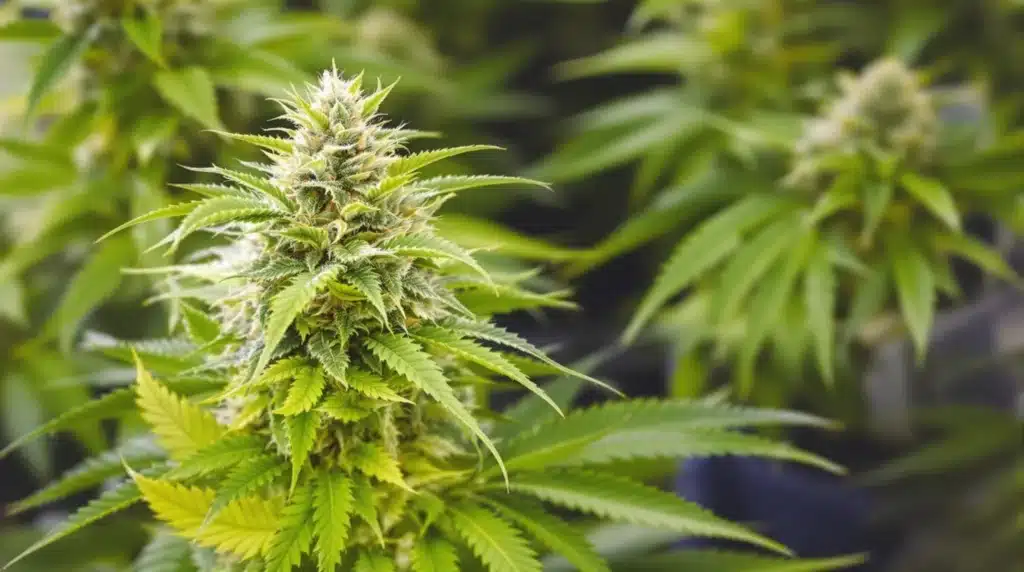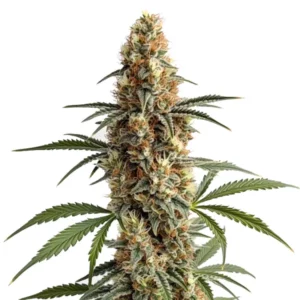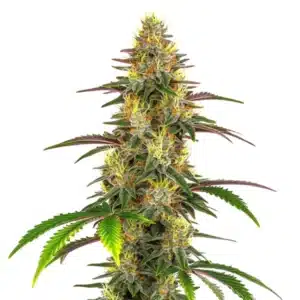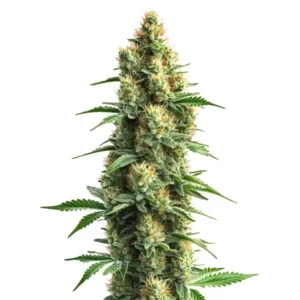
Plant Sap Analysis: A Closer Look
As cannabis growers, we are always in search of effective ways to ensure our plants are healthy and potent. One of these methods is a technique known as Plant Sap Analysis. This article delves into the specifics of Plant Sap Analysis, how it benefits cannabis cultivation, and the best ways to conduct it.
Plant Sap Analysis is a diagnostic tool used in agriculture to assess the health of plants. It involves the extraction and analysis of sap from plants, providing valuable information about nutritional deficiencies, disease risk, and overall plant health. This information is instrumental in making informed decisions about nutrient management and crop health.
Recommended Strains
Mamba Negra
|
|
THC | 18% (Medium) |
|
|
Type | Feminized |
|
|
Yield | High |
|
|
Phenotype | 55% Indica / 45% Sativa |
Mamba Negra CBD
|
|
CBD | 10% – 20% (Medium) |
|
|
Type | CBD Feminized |
|
|
Yield | High |
|
|
Phenotype | 70% Indica / 30% Sativa |
When it comes to cannabis cultivation, Plant Sap Analysis is a game-changer. It delivers real-time nutrient data, allowing growers to adjust their nutrient management strategies promptly and accurately. With this proactive approach, it’s possible to optimize plant health and maximize yields.
Methods for Plant Sap Analysis
Performing a Plant Sap Analysis involves a series of steps that include plant sampling, sap extraction, and nutrient analysis. Let’s take a look at these steps in detail.
The first step is to select the appropriate leaves for sampling. For cannabis plants, a combination of both new and old leaves is recommended. The new leaves provide insight into the current nutrient uptake, while the old leaves offer a glimpse into the plant’s nutritional history.
Once the leaves are selected, they are immediately refrigerated to prevent nutrient loss. The sap is then extracted from the leaves using a sap press. The fresh sap is then ready for nutrient analysis.
Nutrient Analysis
The nutrient analysis can be performed using a variety of methods. One common method is to use a refractometer, a device that measures the concentration of dissolved substances in the sap. This can give an indication of the overall nutrient status of the plant.
For a more detailed analysis, the sap can be sent to a laboratory. The laboratory analysis can provide precise measurements of individual nutrients, helping to identify any specific nutrient deficiencies or imbalances in the plant.
Promos & Deals
Benefits of Plant Sap Analysis
Plant Sap Analysis offers several benefits for cannabis cultivation. The primary advantage is its ability to provide real-time nutrient data, which helps in making timely and accurate nutrient management decisions.
Unlike soil testing, which gives only an estimate of the available nutrients, Plant Sap Analysis provides a snapshot of the actual nutrients present in the plant at the time of sampling. This means you get a real-time view of your plant’s nutritional status, allowing you to address any issues promptly.
Another benefit is the ability to identify nutrient imbalances before they become problematic. By detecting nutrient deficiencies early, you can take corrective action before the plant exhibits any visible symptoms. This proactive approach can help prevent yield loss and improve the overall health and quality of your cannabis plants.
Implication for Cannabis Growers
For cannabis growers, the benefits of Plant Sap Analysis are immense. Whether you’re growing for personal use or on a commercial scale, understanding your plants’ nutritional status can make a significant difference in the quality and quantity of your yield.
One of the strains that can greatly benefit from Plant Sap Analysis is the Mamba Negra from blimburnseeds.com. This strain is known for its high resin production and potent effects, and with a proper nutrient balance, you can maximize these properties.

Plant Sap Analysis for Nutrient Deficiencies
One of the main applications of Plant Sap Analysis is the identification of nutrient deficiencies. Nutrient deficiencies can severely affect the health and yield of cannabis plants, and early detection is crucial for effective management.
Plant Sap Analysis can detect deficiencies of all essential nutrients, including nitrogen, phosphorus, potassium, calcium, magnesium, and trace elements. By providing a real-time view of the plant’s nutrient status, Plant Sap Analysis allows for immediate corrective action, reducing the risk of yield loss.
An example of a cannabis strain that’s highly responsive to nutrient adjustments is the Orka strain. This strain thrives when all its nutrient needs are met, resulting in an intense aroma and potent effects. By using Plant Sap Analysis, growers can ensure that their Orka plants are getting all the nutrients they need.
How to do a Plant Sap Analysis
Conducting a Plant Sap Analysis may seem technical, but with the right tools and procedures, it can be done effectively. Here’s a step-by-step guide on how to do a Plant Sap Analysis.
First, you need to gather samples from your cannabis plants. As mentioned earlier, you should collect samples from both new and old leaves. Once you have collected the samples, store them in a cool place to prevent nutrient loss.
Next, extract the sap from the leaves using a sap press. The sap press applies pressure to the leaves, releasing the sap. The extracted sap can then be analyzed using a refractometer or sent to a laboratory for a more detailed analysis.

Interpreting the Results
The results from a Plant Sap Analysis can provide a wealth of information about your plant’s nutritional status. However, interpreting these results can sometimes be challenging. It’s crucial to understand what each nutrient does and how its levels can impact plant health.
For instance, if the results show low nitrogen levels, this could indicate a nitrogen deficiency. Nitrogen is essential for plant growth and development, and a deficiency can lead to stunted growth and yellowing leaves. In such a case, you would need to adjust your fertilizer application to increase nitrogen levels.
Plant Sap Analysis in Agriculture
While this article focuses on cannabis cultivation, it’s worth noting that Plant Sap Analysis is a tool widely used in broader agriculture. From fruits and vegetables to field crops, growers around the world utilize Plant Sap Analysis to optimize plant health and maximize yields.
Plant Sap Analysis is particularly useful for crops that are sensitive to nutrient imbalances, such as the NYC Diesel strain. This strain is known for its rich diesel aroma and strong effects, but it requires precise nutrient management to thrive. By using Plant Sap Analysis, growers can ensure their NYC Diesel plants are getting the nutrients they need to produce their signature qualities.
Frequently Asked Questions
What is Plant Sap Analysis?
Plant Sap Analysis is a diagnostic tool used in agriculture to assess the health and nutritional status of plants. It involves the extraction and analysis of sap from plants, providing valuable information about nutritional deficiencies, disease risk, and overall plant health.
This technique is particularly valuable in cannabis cultivation as it allows growers to make informed decisions about nutrient management, leading to healthier plants and higher yields.
How is a Plant Sap Analysis performed?
Plant Sap Analysis involves several steps, starting with the collection of leaf samples from the plant. Once the samples are collected, they are refrigerated to prevent nutrient loss. The sap is then extracted from the leaves using a sap press.
The extracted sap is then analyzed to determine the concentration of various nutrients. This can be done using a refractometer or by sending the sap to a laboratory for a more detailed analysis.
What are the benefits of Plant Sap Analysis?
Plant Sap Analysis offers numerous benefits for cannabis cultivation. It provides real-time nutrient data, allowing growers to adjust their nutrient management strategies promptly and accurately. It also allows for the early detection of nutrient deficiencies, preventing yield loss and improving the overall health and quality of the cannabis plants.
Furthermore, Plant Sap Analysis can help growers optimize the health and potency of specific strains, such as the Mamba Negra, Orka, and NYC Diesel strains from blimburnseeds.com.
Can I do a Plant Sap Analysis myself?
Yes, with the right tools and procedures, you can perform a Plant Sap Analysis. You will need to collect leaf samples, extract the sap using a sap press, and analyze the sap using a refractometer or by sending it to a lab.
While the process may seem technical, it’s a valuable skill for any serious cannabis grower. It allows you to take a proactive approach to nutrient management, leading to healthier plants and higher yields.
How can I interpret the results of a Plant Sap Analysis?
Interpreting the results of a Plant Sap Analysis involves understanding what each nutrient does and how its levels can impact plant health. For example, low nitrogen levels could indicate a nitrogen deficiency, leading to stunted growth and yellowing leaves.
By understanding these relationships, you can make informed decisions about nutrient management. It’s also recommended to consult with a plant nutrition expert or agronomist for a more detailed interpretation of the results.




















